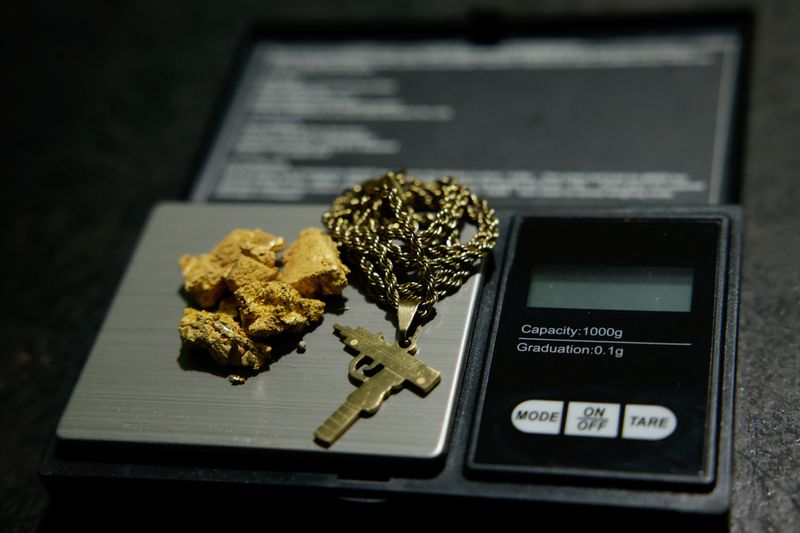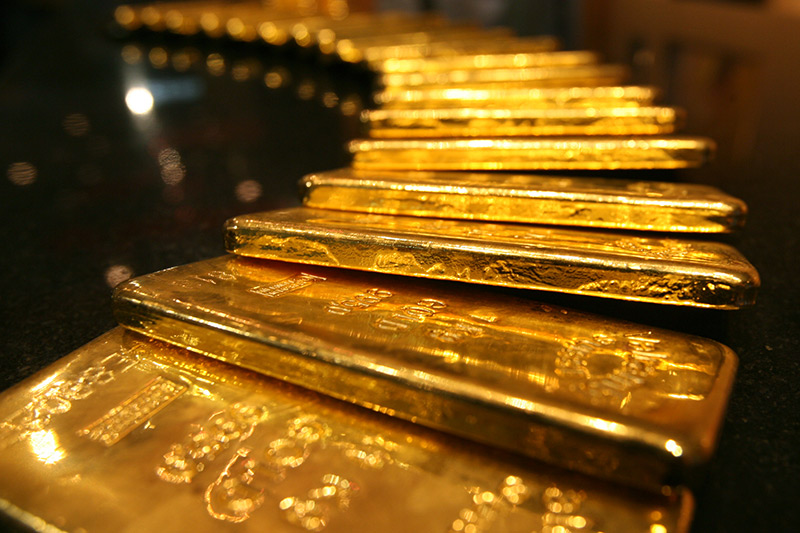By Ricardo Brito and Anthony Boadle
BRASILIA (Reuters) – Harley Sandoval, an evangelical pastor, real estate agent and mining entrepreneur, was arrested in July 2023 for illegally exporting 294 kilograms of gold from Brazil’s Amazon (NASDAQ:) to the United States, Dubai and Italy.
On paper, the gold came from a legitimate company that Sandoval had a license to mine in the northern state of Tocantins. But police said not an iota of gold has been mined since colonial times.
Using advanced forensic technology and satellite imagery, Brazilian federal police said they were able to determine that the exported gold did not come from the Tocantins prospect. Instead, it had been excavated from three different wildcat mines in neighboring Pará, some on protected indigenous reserves, according to previously unreported court documents from November 2023 seen by Reuters.
The prosecutor is among the first in Brazil to use the new technology to tackle clandestine trafficking, which could account for as much as half of the gold production of Brazil, a major producer and exporter of the precious metal. Illegal gold mining has increased at thousands of sites in the Amazon rainforest, leaving the region devastated by environmental and criminal violence.
Seizures of illegally mined gold have increased sevenfold in the past seven years, according to federal police data obtained exclusively by Reuters.
Sandoval, who has been released pending trial and continues to preach with his wife at an evangelical Pentecostal church in the central Brazilian city of Goiania, denies the charges. He claims there is no way to determine where the gold was mined after it has been melted down into ingots for export.
“That is impossible. To export gold you always have to melt it down,” he told Reuters by phone.
THE DNA OF GOLD
Historically, gold has been extremely difficult to trace, especially when metal from different sources has been fused together, obliterating the original signatures. After that, it can be easily traded as a financial asset or used in the jewelry industry.
But researchers say this is starting to change. A police program called “Targeting Gold” creates a database of samples from across Brazil that are examined with radioisotope scans and fluorescent spectroscopy to determine their unique elemental composition.
The technique, long used in archaeology, was developed in mining by geologist Roger Dixon of the University of Pretoria to distinguish between legal and stolen gold.
The program, developed in collaboration with university researchers, involves using powerful beams of light from a particle accelerator in a laboratory in Sao Paulo to study nano-sized impurities associated with gold, whether it is dirt or other metals such as lead or gold , which help trace its origins.
Humberto Freire, director of the federal police’s recently created Environment and Amazon Division, said the technology allows scientists to analyze “the DNA of Brazilian gold.”
“Nature has marked the gold with isotopes and we can read these unique fingerprints with radioisotope scans,” Freire said. “This tool allows us to track illegal gold before it is refined for export.”
The program has helped boost gold seizures since left-wing President Luiz Inacio Lula da Silva came to power last year – a 38% increase in 2023 compared to 2022, according to government figures seen by Reuters. New gold market regulations from Brazil’s central bank, including mandatory electronic tax receipts for all transactions and stricter monitoring of suspicious transactions, have also helped, according to Freire.
“We estimate that about 40% of the gold mined in the Amazon is illegal,” he told Reuters. According to official data, Brazil exported 110 tons of gold worth $5 billion in 2020, making it one of the world’s top 20 exporters. Last year, exports reached 77.7 tonnes, a decline the government attributes to improved enforcement of illegal mining.
INDIGENOUS TENSION
Lula’s predecessor, far-right President Jair Bolsonaro, weakened environmental controls in the Amazon.
That sparked a new gold rush in Brazil, fueled by record gold prices on the global market that were driven up by geopolitical tensions and central bank purchases, led by China.
Prices continued to reach new highs, trading around $2,650 an ounce on Friday.
Gold rush has been a feature of mineral-rich Brazil since the Portuguese colonial past. But the latest wave of wildcat mining that began during Bolsonaro’s government was unprecedented. Satellite images show that there are currently around 80,000 such features in the Amazon rainforest, more than ever before.
Once dominated by prospectors with gold pans, artisanal mining in Brazil has become an industrial-scale activity involving heavy excavators and river dredgers costing millions of dollars. Criminal organizations fly people, equipment and gold in and out of the region using helicopters and planes that land on clandestine airstrips.
Their digs often leave behind gaping ponds of silt contaminated with mercury, which are used to separate the gold from dirt and other minerals.
Last year, thousands of miners who invaded the Yanomami territory, the country’s largest indigenous reserve on the northern border with Venezuela, brought violence and disease that caused malnutrition and a humanitarian crisis among the tribe, prompting Lula to send troops.
But many returned this year after the army withdrew. Lula, who has pledged to eradicate illegal gold mining, tried to fight back by deploying special forces from the environmental protection agency Ibama to indigenous reserves and forest protection parks.
Police say a crackdown on organized crime gangs supporting the wildcat miners is the next step in tackling an illegal trade fueling Switzerland’s jewelry and watch industry, which accounts for 70% of the country’s trade, according to government trade data. Brazil buys exported gold.
Amazon neighbors including Colombia and French Guiana are considering adopting Brazil’s gold analysis method to tackle their illegal gold trade and European governments have shown interest, including Switzerland and Britain, Brazil’s biggest importers after Canada, police and diplomats said.
Brazil accounts for just 1% of the gold imported by Switzerland, a global trading center for the metal, and “measures have been taken to import only legally mined gold,” according to a Swiss embassy statement. The embassy said it has established a working group with other importing countries to study traceability and anti-counterfeiting tools.
A 2022 study by nonprofit watchdog Instituto Escolhas found that 52% of gold exported from the Amazon was illegal, almost all of it from protected indigenous reserves or national natural parks.
A vibrant lobby for informal gold mining has outlasted Bolsonaro in Brazil’s Conservative Congress, where pending bills propose legalizing wildcat mining.
But for now, gold samples from across Brazil are being added to a database with the help of scientists from the laboratory of the Federal Police’s Criminology Institute in Brasilia, where forensic expert Erich Moreira Lima oversees the microscopic scanning of gold nuggets stored in a vault kept.
“Now that we have set up a team, we hope to analyze the 30,000 gold samples that the Brazilian Geological Survey has collected. Within a few years we should have mapped all 24 gold-producing regions of Brazil,” he told Reuters.

Geologist Maria Emilia Schutesky and her team from the National University of Brasilia’s geoscience laboratory perform mass spectrometry scans on gold samples to identify associated molecules, such as lead, and determine the origin of the gold.
“We investigators strive for a 100% ability to trace gold, but that is more than what the police need to prove a crime, which is just to establish that the gold did not come from where a suspect claims it comes from,” Schutesky said.


